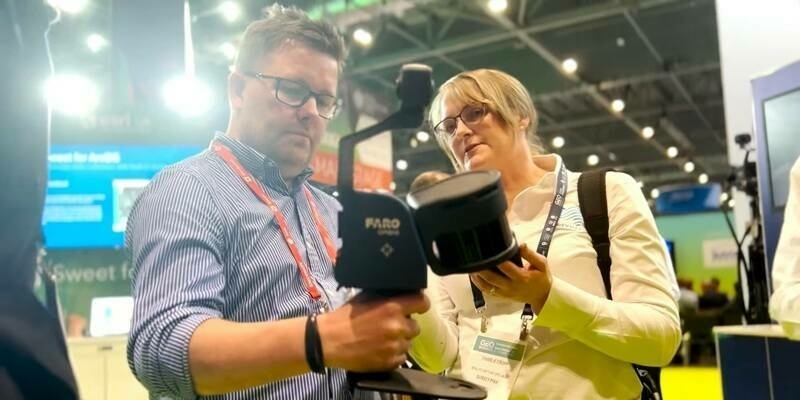“Cities are competing to attract new employers, and they in turn are competing for top talent,” says Matt Tredinnick, a global marketing director at Pitney Bowes. “Quality of life issues are key to attracting both as companies look for new places to locate. Cities that aren’t building the infrastructure that’s needed to enable a smart city environment are losing out.”
Current residents are also looking to their local governments to improve services and be more responsive — without raising taxes. That includes addressing the growing problem of aging, decaying infrastructure as well as undertaking new and innovative smart city initiatives.
The paper Smart Cities: A Roadmap for the Future by Governing, a division of the government-focused research company e.Republic, offers a vision for smart cities, outlining solutions such as:
- Public safety. Combining historical crime records, census data and mapping with new technologies such as closed-circuit television and gunshot monitors can help public safety officials identify patterns and respond to potential problems.
- Smart lighting. In addition to helping reduce costs, smart lighting can be linked to traffic flow and weather data to vary lighting based on changing conditions in real time, improving safety.
- Connected trash cans. Equipped with sensors, they can signal when they are full — but link them to artificial intelligence systems, and cities can generate cost-effective, real-time collection routes.
- Smart transit systems. Reducing rider wait times can provide time savings that add up to billions of dollars in efficiency gains and reduce citizen frustration with inefficient systems.
- Monitored drainage. Sensors can detect when drains are nearing capacity and can alert maintenance crews of potential flooding so they can address the issue before it becomes a potential public safety and traffic problem.
The journey begins with infrastructure
“One of the first steps a city should take in the journey to becoming a smart city,” says Tredinnick, “is to understand its infrastructure. That includes inventorying assets, their location and their state of repair, so they can be used as key pieces of a foundational smart city environment.“
“One of the challenges in managing assets is avoiding data silos,” says Ian Slesser, global director for asset management at Pitney Bowes. “Historically, a lot of projects have been done as point solutions, looking at just one asset class. That makes it impossible to realize the exponential benefits that come with using data to tie assets together, like linking street lights with roadways and drainage systems.”
For example, Sydney, Australia, had more than 60 disparate databases relating to infrastructure and the organizations responsible for it. Consolidating this data into a single, geotagged view of the city is key to meeting its ambitious 2030 goals for a “green, global and connected Sydney.” It also simplified processes for city staff as well as contractors given access to the data.
Connecting the asset management system with the city’s financial applications has led to better planning. And connecting the inventory and customer service systems enables city staff to immediately answer questions about ongoing work or service requests — leading to greater citizen satisfaction.
When information becomes a game changer
“Sydney is a great example of how the follow-on effect of a smart city project can change the dynamic of a city by enabling it to build relationships with its citizens. It’s the kind of thing we see people getting very excited about,” says Slesser.
Consider the humble pothole, the bane of city drivers, and imagine a smart city where drivers can send a location-tagged photo of a pothole to an app. The city turns that into a work order and posts updates on the repair schedule
“What you end up with is a city that interacts with its constituents, and residents who interact with each other, building a real sense of community. It gives a city a personality, and that can be a game changer,” says Slesser. “The city becomes more than concrete and steel — it’s a place where people really want to live and work.”
Learn more about becoming a smarter city
Regardless of where they are in the smart cities journey, government leaders can take steps today to prepare for the next generation of smart cities technology. Read Smart Cities: A Roadmap for the Future, by Governing for Pitney Bowes, to learn strategies for making the smart city vision a reality, along with pitfalls that can stand in the way of success.
The smart city: making the vision a reality.
In today’s climate of growth combined with flat or declining budgets, along with higher expectations for responsive services, municipal governments around the world are embracing the smart cities movement. They are finding ways to leverage technology- and data-based solutions to reduce costs, deliver better services and improve the lives of their citizens. However, the journey to becoming a smart city is not without its pitfalls. One way a city can sidestep pitfalls is to begin with the basic step of understanding its infrastructure — what assets it has, where they are, and what condition they are in. Smart Cities: A Roadmap for the Future — a research report from Governing in association with Pitney Bowes — presents an in-depth discussion of the roles infrastructure and data play in building a smart city, offers initiatives that are delivering value today and outlines steps governments can take to get started.
Subscribe to our newsletter
Stay updated on the latest technology, innovation product arrivals and exciting offers to your inbox.
Newsletter

